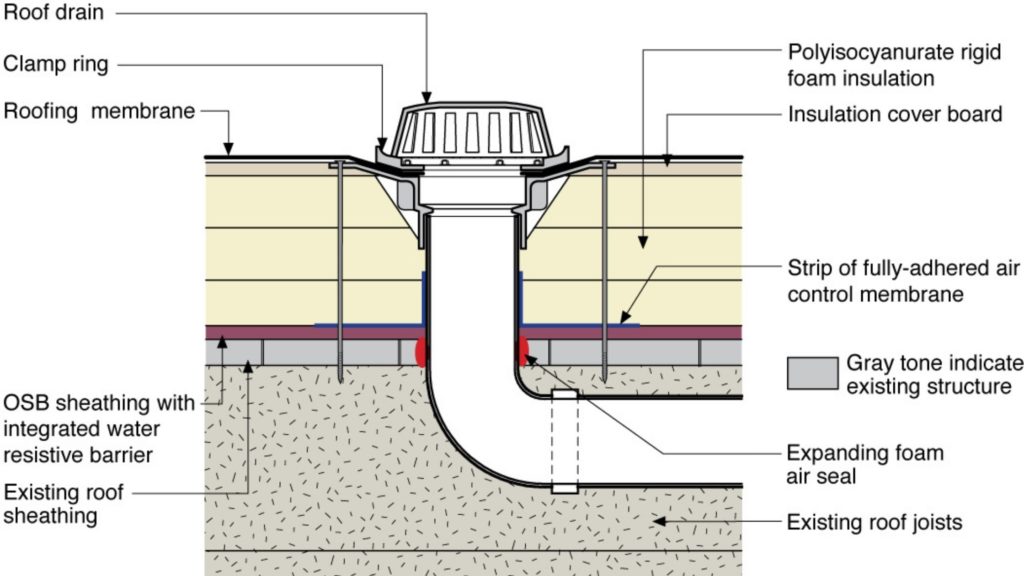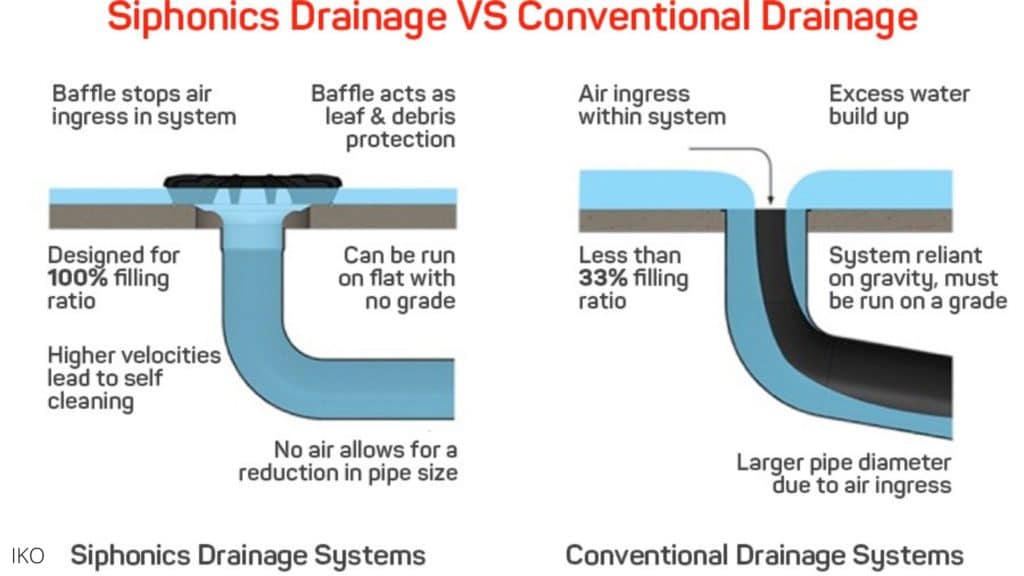Most commercial roofs are flat or low-sloped, because of that ponding is a real issue. But that is not to say that ponding itself is bad, because it’s not. It’s ponding that doesn’t disappear after 3 days is where problem lies.
To counter the ponding, a proper drainage system is vital to keeping the flat roof dry and saving you from costly damages in the future. Here are 4 Ways You Can Easily Drain Your Flat Commercial Roof.
But first who is Central Roofing? And why should you trust us?
Central Roofing Company has been servicing commercial roofs for over 30 years. Some of our biggest clients include 20th Century Fox and See’s Candies. We’ve seen all types of commercial roofing systems, and can confidently advise our clients about all things roofing. Without further ado. Let’s dive right in!
INSTALL GUTTER SYSTEMS
Gutter systems are usually thought to be only viable for houses but that is not true. In fact, they are suitable for low-slope commercial roofs that have a slope greater than 2%.
 Cons: Gutter systems have an open drainage system that requires regular cleaning due to the build-up of debris that may cause the gutter drain to overflow.
Cons: Gutter systems have an open drainage system that requires regular cleaning due to the build-up of debris that may cause the gutter drain to overflow.
INSTALL INNER ROOF DRAINS
Many commercial roofing experts recommend this system for flat roofs. Inner roof drains are hidden from sight and installed in a low section or channel to collect water.
The channel will feed the water into the hidden pipes leading the water to an underground piping system.

INSTALL SCUPPER DRAINS
These are essentially open holes cut on the roof’s edge. The roof will be sloped somewhat so that the water will slide in the direction of the scuppers. The scuppers will then run the water into a downspout on your building’s exterior, driving the water away from your roof.

SIPHONIC ROOF DRAINS
Despite what the name entails, they don’t actually siphon any water at all. Instead, they use a gravity-induced pump to remove the water at a high velocity from multiple drains on your flat roof once.

CONCLUSION
Any one of these systems will effectively divert water from your flat roof, provided that it’s installed correctly and properly maintained.
Like anything with commercial roofing, a new drainage system can be expensive. It’s important to weigh the pros and cons of each system before you decide which system is the right system for your building. Always contact a professional to look at the size and fit of the drainage system on your roof.
